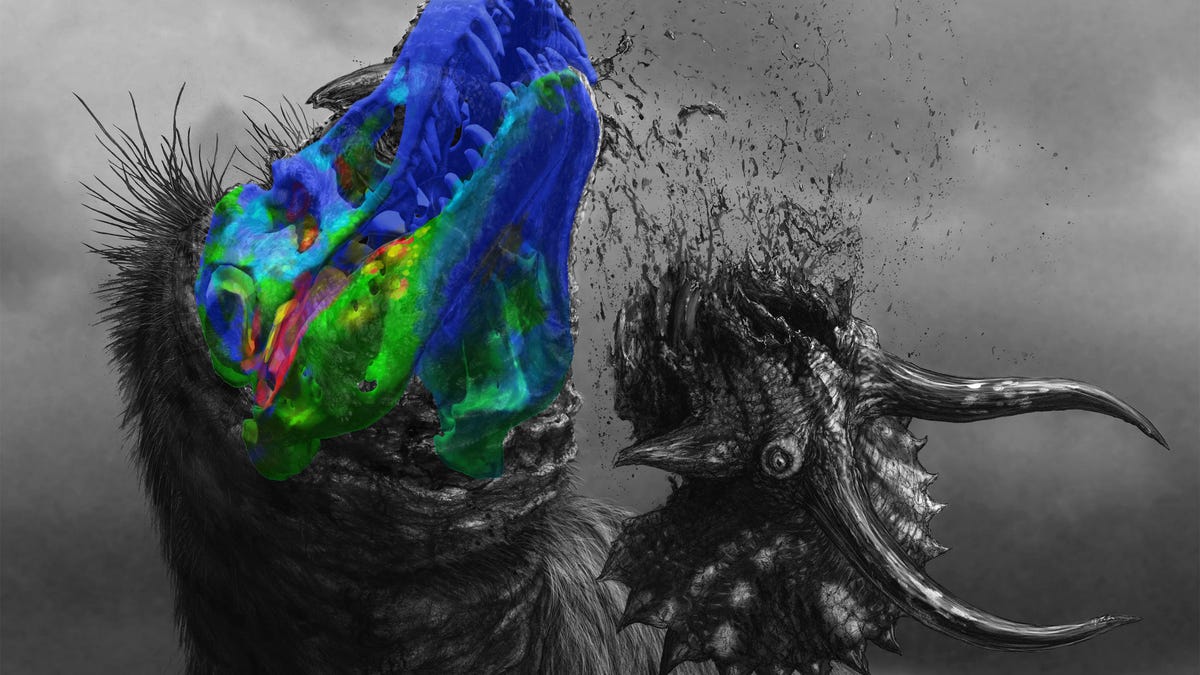T. rex had a skull so hard even T. rex couldn't break it, say scientists
Its chomp game was so strong it should've shattered its own skull, but T. rex is too hard core for even itself.

The above artist's rendering of the T. rex with 3D imaging shows muscle activation in its head.
An adult Tyrannosaurus rex -- the hardest-biting land animal ever known -- had a maximum bite force of almost 12,800 pounds. That's about 13 Steinway Model D concert grand pianos worth of prey-chomping devastation so powerful that scientists have been baffled by how the beast didn't shatter its own skull. But new evidence emerged Wednesday suggesting a simple answer: T. rex is just that hard core.
According to new research from the University of Missouri, the key to T. rex's cranial cohesion is the stiffness of its 6-foot-long, 5-foot-wide skull.
"When you put a lot of force on things, there's a trade-off between movement and stability," Associate Professor Cassie Holliday said in a release. "Birds and lizards have more movement but less stability. When we applied their individual movements to the T. rex skull, we saw it did not like being wiggled in ways that the lizard and bird skulls do, which suggests more stiffness."
In this way, the researcher team said, T. rex's skull was stiff like those of hyenas and crocodiles. Previous researchers may've missed this key trait by looking at the question from what graduate student Kaleb Sellers called "a bone-only perspective," which doesn't take into account "all of the connections -- ligaments and cartilage -- that really mediate the interactions between the bones."
Using a combination of anatomy and engineering analysis and 3D imaging, and with the help of two of T. rex's relatives, the gecko and the parrot, the research team re-created models of T. rex's skull to observe its chewing behavior and all those ligaments and cartilage.
Researchers said their new findings could also help assess jaw and muscular studies in humans and other animals.
An illustration of the key features of a stiff T. rex skull.

